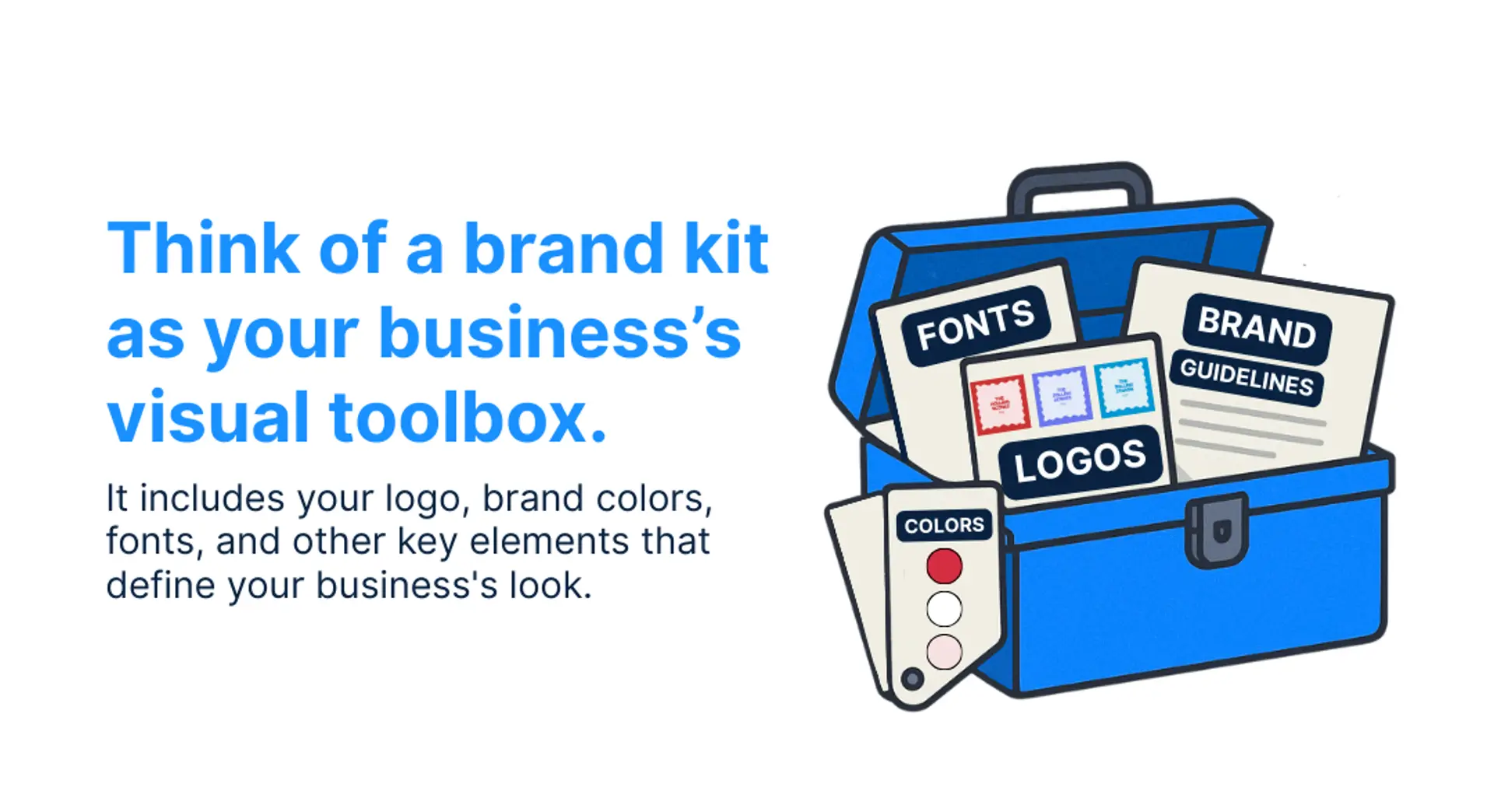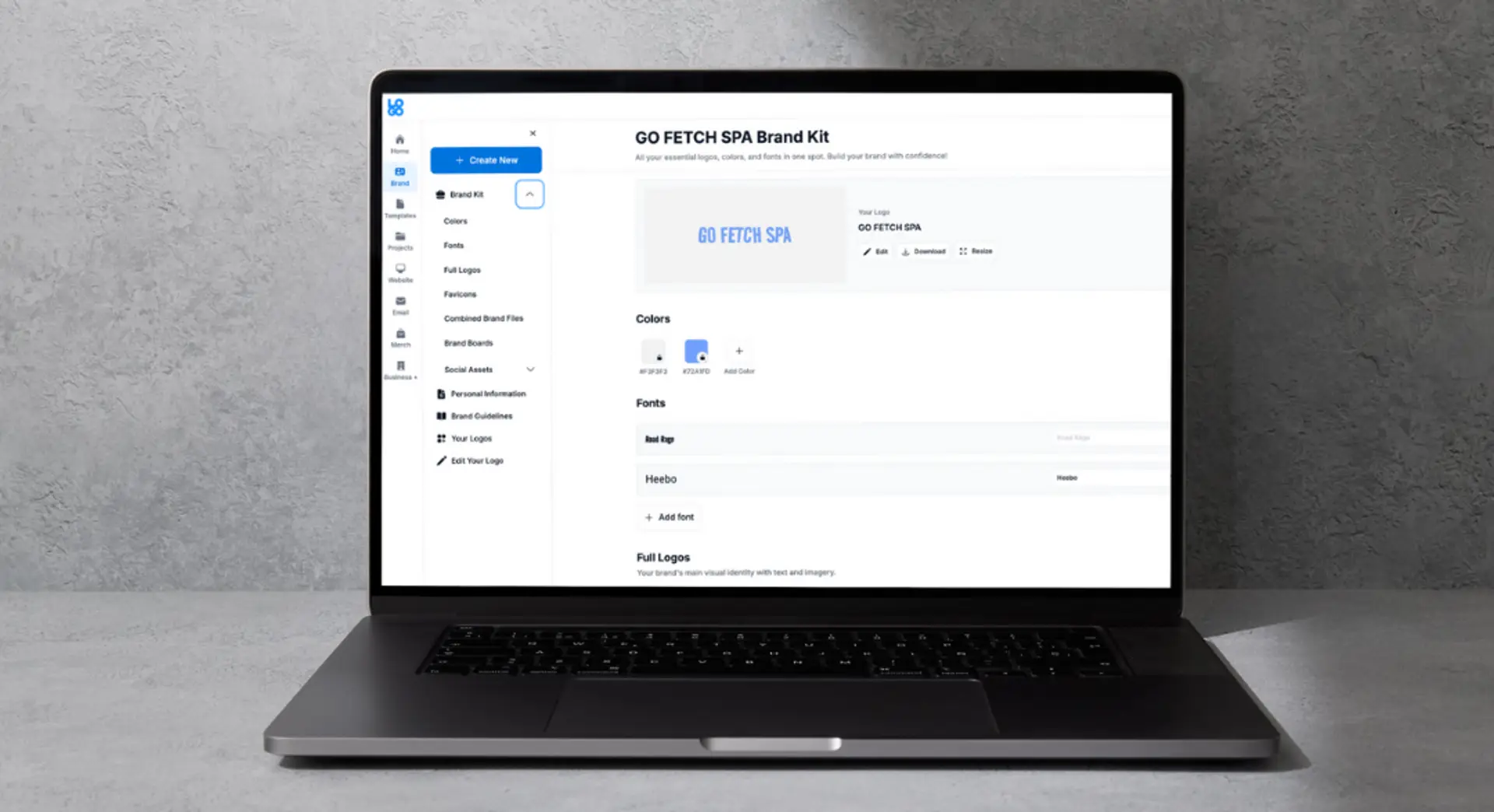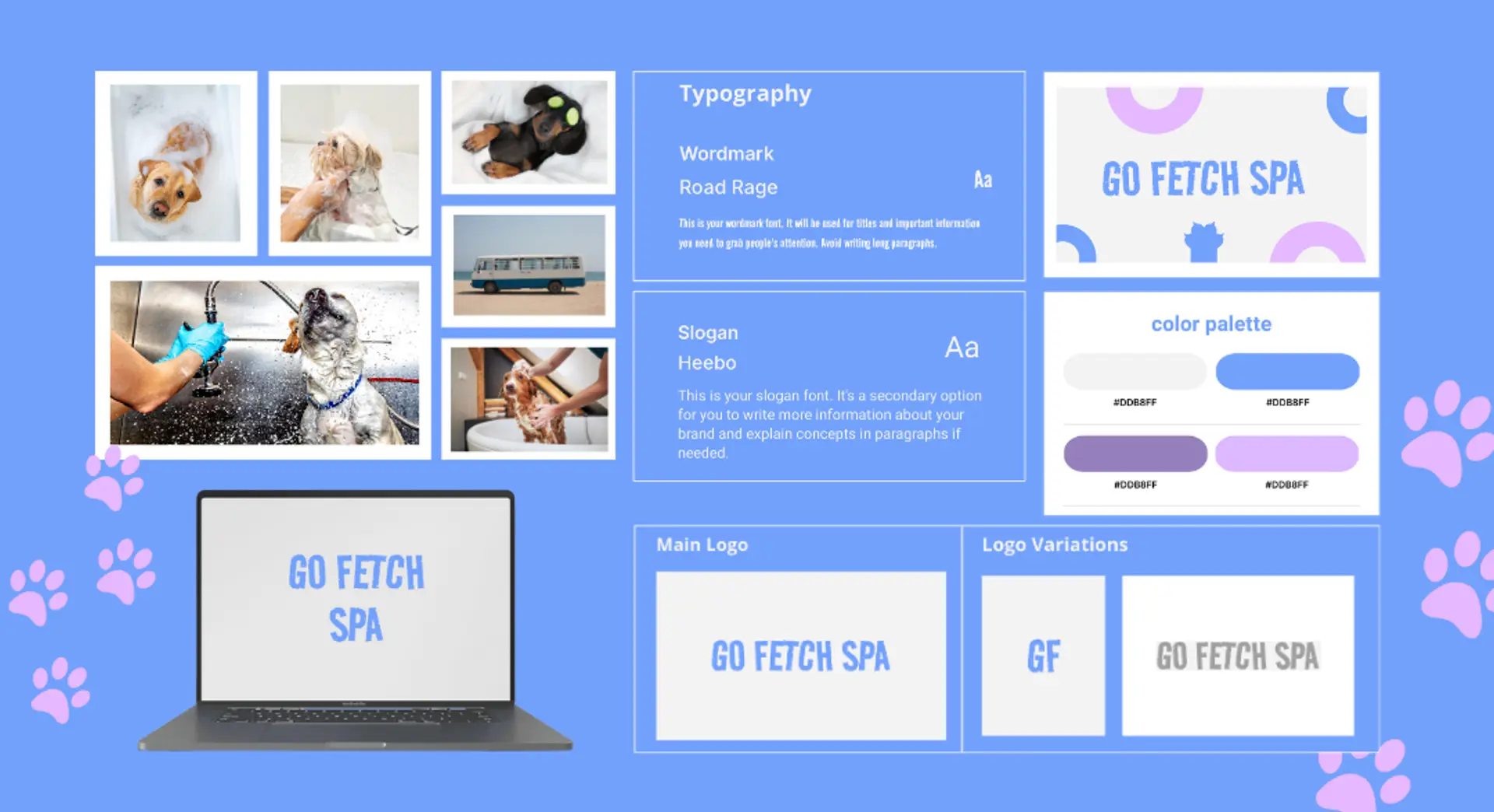How to Build a Brand Kit That Keeps You Consistent
Oct 14, 2025

Oct 14, 2025

Branding often starts with a logo, but things can get messy fast. A different font here, a new color there…and suddenly, nothing really matches.
It’s easy to overlook branding when you’re focused on keeping your business running. But it shows up everywhere. Whether you realize it or not, every design choice is shaping how people see your business.
Keeping all of that consistent takes work. Even if you have help, it’s often quicker to do it yourself than to explain which font to use or where to find the right logo file. And when things don’t match, your brand can start to feel scattered, even if what you’re offering is great.
This is exactly what a brand kit is for. It keeps your logo, colors, and fonts in one place so everything you make—from flyers to Instagram posts—actually feels like it came from the same business. No digging for files. No guessing what’s “on-brand.” Just a clear, simple way to keep things consistent.
Here’s what to include in a brand kit and how to create one that saves you time.
Think of a brand kit as your business’s visual toolbox. It includes your logo, brand colors, fonts, and other key elements that define your business's look.
Instead of tracking down files or guessing what color you used last time, everything is right there, completely organized, and ready to go. You can open up your brand kit and know exactly what to use anytime you need to create something new.

The biggest benefit of a brand kit is consistency. Your look will be the same wherever your brand appears, from social posts and email graphics to signage, product tags, or packaging. That consistency makes your business easier to recognize and trust.
If design tasks feel like a constant game of “find the right version,” your brand kit is how you simplify the process and keep things looking like they belong together.
You may be feeling a bit overwhelmed with the thought of creating a brand kit, and that’s okay. Your brand kit doesn’t need to be over the top. It just needs to work. The goal is to have your core visual elements in one place so you can use them quickly, confidently, and consistently.
These are the essentials every small business should have on hand:
With these five pieces in place, you’ll have everything you need to create content that looks consistent and feels like your brand.
If you’ve ever opened a design tool and found yourself thinking, “What font did I use again?”, you probably need a brand kit.
The truth is, most small businesses hit a point where branding starts to feel scattered.
You start with a logo and some colors that feel right, but as things grow and shift, it can get harder to keep everything looking consistent across all of your marketing materials and digital platforms. What used to feel clear starts to feel messy. And when your visuals are all over the place, it can make your business feel that way, too.
If any of this sounds familiar, here are a few signs your business might be ready for a brand kit:
A brand kit won’t solve every design challenge, but it will give you a solid foundation to work from. It saves time, reduces second-guessing, and helps your business show up like it’s put-together, even when things behind the scenes are moving fast.

Once you know what goes into a brand kit, the next step is pulling it all together, and LOGO.com makes that part simple.
You don’t need to have anything designed ahead of time. Just enter your business name, and LOGO.com will help you build a complete brand kit with a logo, color palette, font pairings, and more.
Here’s how to get started:
1. Enter Your Business Name: LOGO.com generates logo designs based on your name and preferences. You can explore different styles and customize one to match the look you want.
2. Customize Your Assets: Once you pick a design, you can adjust the colors and typography to reflect your brand’s personality.
3. Get Your Brand Kit: After you create your logo, LOGO.com generates a complete brand kit, which includes your logo files in multiple formats, your color palette with HEX codes, font pairings, and a visual brand board.
4. Access Templates and Brand-Ready Tools: You’ll also get access to templates for social posts, business cards, emails, and more, already styled to match your new brand.
Once your brand kit is in place, the real value comes from using it often. The more consistent your visuals are, from your website to your packaging, the easier it is for people to recognize your business and feel confident engaging with it.

Here’s a simple plan to help you start using your brand kit right away:
Your website is one of the first places people interact with your brand, so you’ll want to make a good first impression.
Here’s how to use your brand kit to bring it all together:
If your website builder has a design or theme panel, set your brand colors and fonts there first. This way, as your website grows, every page you build will automatically stay on-brand.
Social media is where your brand shows up the most, and it’s often where people discover you for the first time. This is where your brand kit will really shine. The more you are consistent with your branding, the more people will start to recognize your business.
Here’s how you can use your brand kit on your social media platforms:
If you’re not sure where to start, try creating three simple post templates you can rotate through. When the foundation is already set, it’s much easier to stay active and consistent.
When your emails match the rest of your branding, your business feels more put-together and professional.
Here’s how to bring your brand kit into your emails:
Even the smallest of touches can make a big difference in how polished and on brand your emails feel.
If you’re using things like business cards, product packaging, or thank-you notes, your brand should show up there too. When your printed materials match your digital presence, your business feels more cohesive and more professional.
Use your brand kit to:
If you’re working with a local printer or using an online design tool, having your logo files, HEX codes, and font names ready makes the process faster and keeps you from making design decisions that don’t align with your branding.
Even if you’re the one handling most things right now, chances are you’ll eventually ask someone else to help, whether it’s a freelancer, a part-time assistant, or a friend lending a hand.
Your brand kit makes that handoff a lot easier. Instead of explaining your brand from scratch, you can simply send over:
Remember to include your brand guidelines, too. They give whoever’s helping you a clear picture of how to use your branding assets the right way, like where to place your logo, which colors to use, and what not to change.
If you have a LOGO.com Pro account, you’ll find your brand guidelines already built for you in your dashboard.
You’ve already put time and energy into building your business. Now it’s time to make sure your brand reflects that same level of care.
A strong brand kit helps your business look more polished, stay consistent, and feel easier to manage, whether you’re designing your website, posting on social media, sending emails, or creating packaging. It keeps everything aligned, even when things are moving fast behind the scenes.
With LOGO.com, you don’t have to piece it all together. Just enter your business name, choose a logo, and get a complete brand kit that’s ready to use everywhere your business shows up.
It’s one simple step that helps take your brand from start to success.